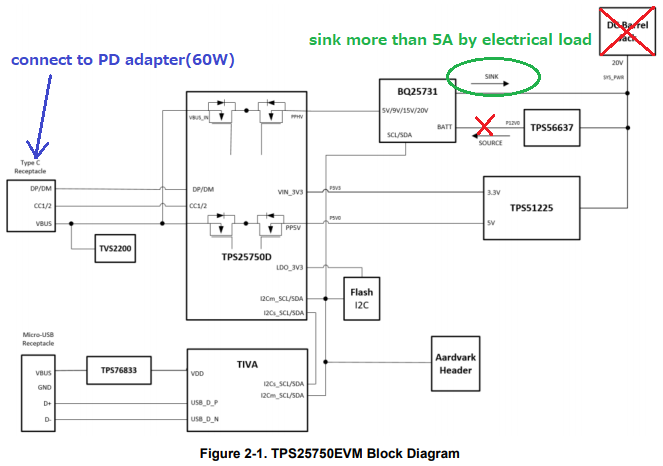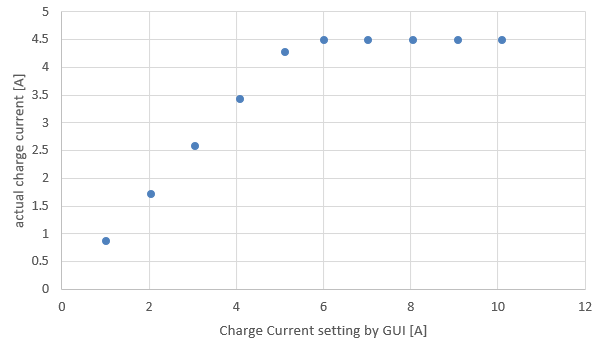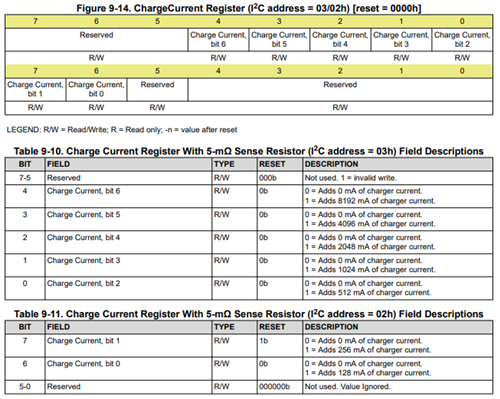Other Parts Discussed in Thread: BQ25731, TPS25750, BQSTUDIO, EV2400
Hi Team,
My customer is evaluating the sink current of TPS25750EVM.
DC Barrel Jack isn't connected and external 3.3V is supplied to VIN_3V3.
He connects the PD adapter (Anker PowerPort Atom III 60W) to Type-C connector then sinks current from SYS_PWR however he couldn't sink more than 5A.
If he sink more than 5A, SYS_PWR (4.2V) was dropped although 20V is supplied to VBUS.
He set the following in TPS25750EVM Application Tool.
- battery charging voltage: 4.2V
note) CELL_BATPRESZ: 1cell (=VDDA*0.25)
- battery charging current: 1.024A or 3.072A or 5.12A or 7.04A or 10.112A <- The behavior isn't related to battery charge current.
Can TPS25750EVM sink more than 5A?
If you need additional information or has something unclear, please let me know.
Best Regards,
Yaita






